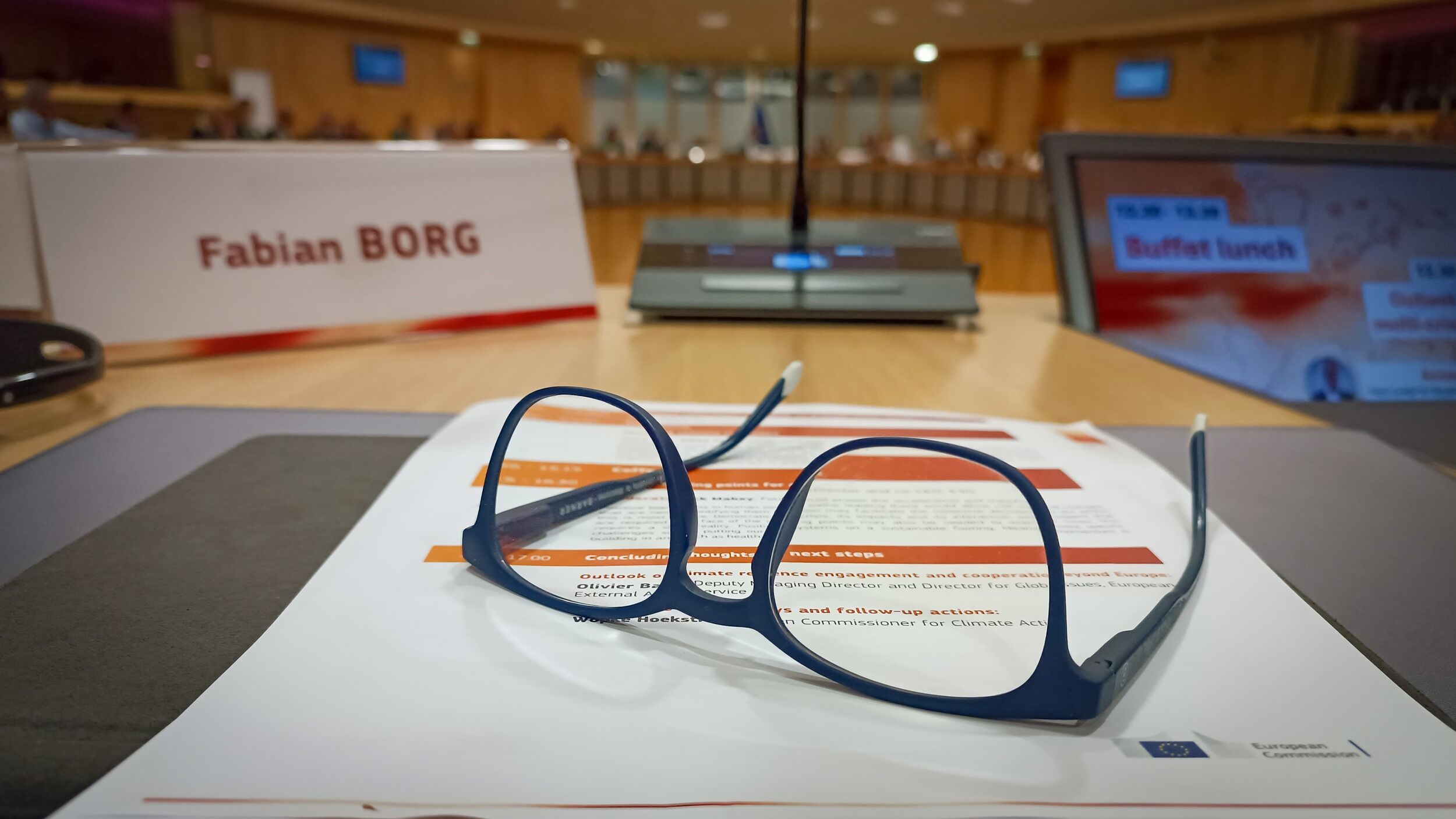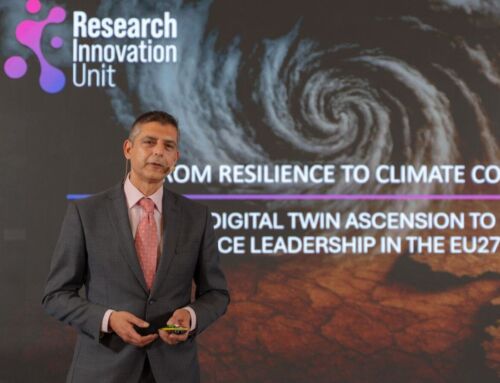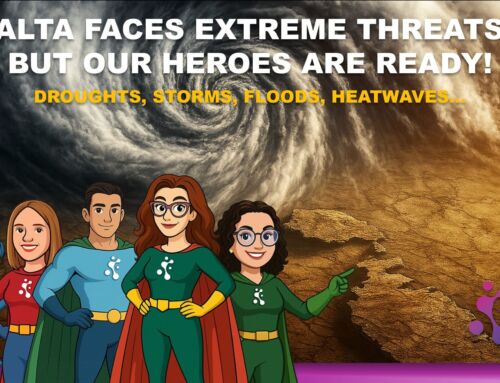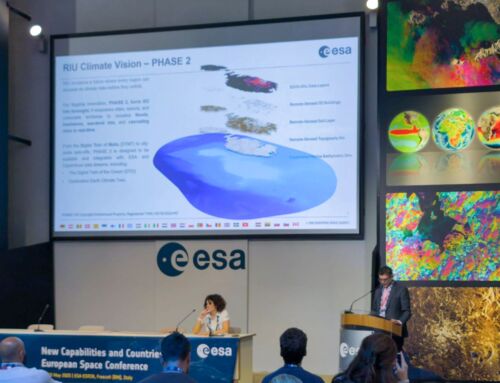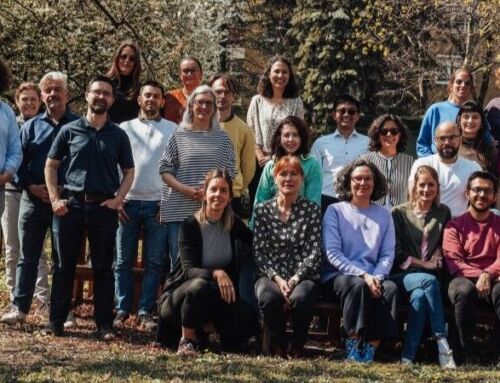On 11th September 2024, I had the privilege of attending the European Commission’s European Roundtable on Climate Risk Management at the Berlaymont building in Brussels. The event gathered a distinguished group of policymakers, academics, industry leaders, and climate advocates to discuss one of the most pressing challenges of our time: managing the increasingly omnipresent risks posed by climate change. This roundtable wasn’t just another policy discussion; it was a clear call to action, a platform for frank dialogue on how the European Union (EU) and its Member States can address the mounting threats of climate change with urgency and innovation.
In my view, the discussions highlighted the need to adopt what I termed a “firefighting” mindset—a proactive, immediate approach to tackling the most pressing climate threats. Climate risks are intensifying at an alarming rate, and current adaptation efforts are struggling to keep up. Incremental change is no longer sufficient. At this roundtable, I emphasised the necessity for bold, decisive actions that leverage science, technology, policy, and ethical geoengineering to protect lives, livelihoods, and the environment.
Why We Must Act Now
Europe is at a critical juncture. The impacts of climate change are already being felt, threatening social systems, economic stability, and even basic human needs such as food and water. The roundtable was convened to respond to these challenges and build a coordinated, EU-wide response.
During the event’s opening session, high-level speakers acknowledged the monumental task ahead. Kurt Vandenberghe, Director-General of DG CLIMA, and other keynote speakers highlighted the importance of flexible and responsive governance structures, stressing the need for better coordination between EU institutions, national governments, and local actors. Throughout the day, this theme of multi-level governance and cooperation resonated deeply, underscoring the complexity of climate risk management and the necessity for a unified approach across all levels of government.
Empowering Actors with Improved Governance and Structural Policies
One of the key sessions, “Empowering Actors – Improved Governance and Structural Policies”, focused on the importance of governance structures that fully integrate climate risk management. Spatial planning, in particular, was identified as a critical policy instrument for enhancing resilience. Land use decisions have profound implications for communities’ ability to withstand climate risks, and policies must reflect both the economic and environmental value of land.
Participants from various governmental agencies underscored the responsibility of Member States to ensure that local and regional actors have the resources and capabilities to manage climate risks effectively. This is particularly important for smaller countries, where resources are often limited but the impacts of climate change can be disproportionately severe.
Equipping Risk Owners with Tools and Data
Another key session, “Equipping Risk Owners with the Necessary Tools”, addressed the crucial role of data in decision-making. High-quality, granular climate data is essential for long-term planning and the development of early warning systems. However, significant gaps remain, particularly in smaller EU Member States and among private sector actors, where access to the latest tools and expertise is often limited.
In my speech, I introduced the “firefighting” mindset, proposing that we need to act swiftly with the tools and knowledge we already have to mitigate the most immediate threats posed by climate change. While nature-based solutions are critical, I emphasised the need for a hybrid approach that also incorporates geoengineering solutions, provided they are deployed ethically and in ways that do not exacerbate existing inequalities. This blend of immediate action and forward-thinking innovation, I believe, is key to addressing the scale and urgency of the climate crisis.
Financing Climate Resilience: An Urgent Investment Challenge
The afternoon session, “Financing Climate Resilience”, focused on the urgent need to increase investment in climate adaptation and resilience. Discussions highlighted the gap between the cost of climate adaptation and the willingness of investors and policymakers to fund these efforts. Several participants from the financial and insurance sectors emphasised the importance of understanding the long-term benefits of resilience investments, particularly for vulnerable regions and communities.
I took the opportunity to stress the importance of ensuring that climate adaptation is inclusive and equitable. Vulnerable communities—particularly those in rural or economically disadvantaged areas—must not be left behind. We need to develop financing models that ensure adaptation measures benefit everyone, not just those with the financial means to invest in resilience.
Overcoming the Status Quo with Science, Technology, and Policy
Throughout the roundtable, a recurring theme was the need to overcome the status quo. We have the scientific knowledge, technological tools, and policy frameworks to manage climate risks more effectively. However, the political will to take decisive action often lags behind.
I argued that we need to adopt the firefighting mindset more broadly. Just as firefighters respond immediately to emergencies, we must act now to prevent the worst impacts of climate change from taking root. This approach requires not only quick action but also the integration of innovative solutions that go beyond traditional policymaking. We must be bold in our use of geoengineering technologies, such as carbon capture and solar radiation management, while ensuring these measures are governed by strong ethical standards and rigorous oversight.
My Reflections: A “Firefighting” Approach to Climate Risks
As I reflect on the roundtable, I am encouraged by the progress we have made but also acutely aware of the challenges that remain. Policymaking, while essential, is not enough on its own. We must adopt a firefighting mindset: one that leverages our existing scientific knowledge, technological innovations, and policy frameworks to address the most immediate and pressing climate threats.
The hybrid approach I advocated for, combining nature-based solutions and geoengineering, offers a pathway to manage the multi-dimensional risks posed by climate change. However, any geoengineering must be pursued with the highest ethical standards, ensuring that it benefits all and does not exacerbate inequalities or environmental harm.
A Call for Action
As the day drew to a close, the discussions at the roundtable reinforced the urgency of the task before us. The European Roundtable on Climate Risk Management was not just an academic exercise; it was a clear call for action. Europe is ready to lead the fight against climate change, but we must act swiftly, using the tools we have and constantly innovating to stay ahead of evolving climate risks.
The roundtable provided a platform for sharing ideas and forging partnerships across sectors. But the real test lies in the implementation of these ideas. Climate change is accelerating, and we cannot afford to wait. As I left the Berlaymont building, I felt a renewed sense of purpose. We must act now to safeguard our future, adopting a firefighting mindset to tackle the most pressing challenges head-on.
Ultimately, climate resilience is not just about protecting our environment—it is about ensuring a safe, just, and prosperous future for all Europeans. Now, more than ever, we must embrace this proactive approach and act before it’s too late.

